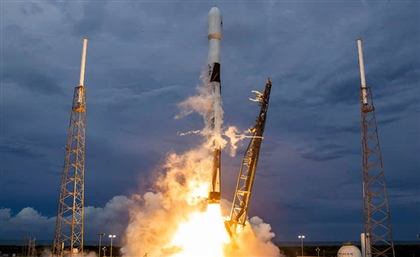Inventor Makes Four Hour Trip to the Moon Possible
Are we about to see Star Trek in real life? One British scientist has pretty much dispelled all of Newton's theories...

British inventor Roger Shawyer took inspiration from the fictional Starship Enterprise from the series Star Trek to build a space ship engine that shatters Newtonian science, allowing astronauts to reach the moon in as fast as four hours.
The science community's jaws collectively dropped to the floor the inventor proved that his EM Drive works, ultimately defying a fundamental concept of physics. The conservation of momentum is most easily understood by looking at a pendulum, which visually shows that something propelled forward must push back in the opposite direction. However, Shawyer has done what was once thought to be impossible by creating an electromagnetic propulsion drive that could make interplanetary travel possible.

EM Drive
The drive likened to the Starship Enterprises Impulse Drive, the EM Drive produces thrust by channeling solar power energy that generate multiple microwaves that bounce back in forth in a chamber. The engine doesn’t require the use of rocket fuel meaning that theoretically the engine could keep running forever until there is a mechanical failure. Aside from being fuel-less the drive is believed to be capable of producing thrust several thousand times greater than a photon rocket make travel to Pluto possible within 18 months.
For 15 years Shawyer was ridiculed for his proposed engine, however, NASA has confirmed that they believe it works. Further confirming its feasibility is Martin Tajmar, professor and chair for Space Systems at Dresden University of Technology in Germany demonstrated that the concept produces thrust. Talking to the Telegraph, Tajmar claims "Our test campaign cannot confirm or refute the claims of the EM Drive but intends to independently assess possible side-effects in the measurements methods used so far," said Prof Tajmar adding, "Nevertheless, we do observe thrust close to the actual predictions after eliminating many possible error sources that should warrant further investigation into the phenomena."
Shawyer hasn’t officially published his new results, but claims they will be forthcoming in the next few months, confirming his drive work. Meanwhile, Tajmer recently presented his findings on the matter this week at American Institute for Aeronautics and Astronautics’s Propulsion and Energy Forum and Exposition. As for how it works and the laws of physics governing its success is still a mystery as NASA suggest that the new technology manipulates sub atomic particles. Hopefully Shawyer’s latest findings will shed light on how it works and you can bet that when it is released will be one of the most significant breakthrough in space travel since man first ventured out into the stars.
- Previous Article Why I Converted to Islam: Five Women's Journeys
- Next Article 10 Unbelievable Vacation Deals
























